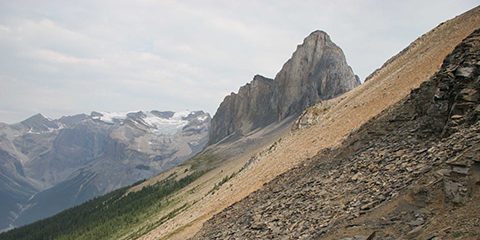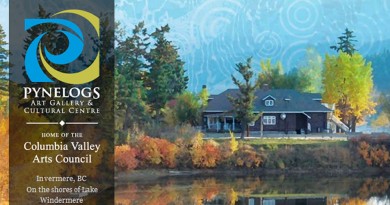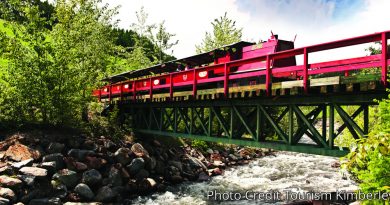Yoho’s Burgess Shale
In the year 1909, one of the most important fossil locations in the world came to light when a self-educated American palaeontologist by the name of Charles Doolittle Walcott discovered fossils along a horse trail on the southwest side of a ridge between Mt. Field and Wapta Mountain in Yoho National Park. Walcott named the area the Burgess Shale after nearby Mt. Burgess. An amazing fact about the Burgess Shale is that the sediment layers of this region were deposited on an ocean floor 500 million years ago, during the Cambrian explosion period, and now can be found at an elevation of 2,300 m (7,545 ft) above the sea level in the Rocky Mountains. Burgess Shale was designated a World Heritage Site in 1981 and is considered to be one of the most important fossil locations in the world. Scientists have to apply for a permit to explore the area and collect specimens.

Walcott, who had never finished high school but had been collecting minerals and animal specimens from an early age, was driven to learn more about geology and fossils, being particularly interested in the Cambrian layer. He came to Canada in 1907 after hearing that Canadian Pacific Railway workers had been collecting “stone bugs” in the Burgess Shale. In 1909, he located their source high up on Fossil Ridge and began excavating.
During the next 14 years, Charles Walcott made repeated visits to the Burgess Shale with his family, collecting more than 65,000 specimens from what is now known as the Walcott Quarry. They are now housed in theSmithsonian Institution in Washington, DC.
The history of the Burgess Shale is important. The discoveries made there have provided an amazing window into what the world looked like half a billion years ago, helping us to make an unprecedented leap in our understanding of Earth’s history.
The Burgess Shale Geoscience Foundation
The Burgess Shale Geoscience Foundation was established in 1993 to interpret and educate about the Burgess Shale, its fossils and their importance to the related geology of the world. A primary objective of the foundation is to promote the integration of earth sciences into the school curriculum so that our future leaders will have a better understanding of global, earth-related issues on which to base decisions about the welfare of the planet and its occupants.

The foundation has built strong partnerships with schools, universities, institutions and organizations on a local and national level and around the world to promote the development of earth science education programs. Its headquarters is located in the town of Field, BC and from here has developed a strong working relationship with the Rocky Mountain School District No. 6 as well as other organizations and institutions in the Columbia and Bow Valleys, in North America, and around the world.
As a non-profit society, all fees from the educational hikes and associated lectures go toward the establishment of the Burgess Shale Learning Centre or its earth science education and research programs. Further information may be found on their website ( http://www.burgess-shale.bc.ca/ ) or by contacting:
The Burgess Shale Geoscience Foundation
201 Kicking Horse Ave.
PO Box 148
Field, BC V0A 1G0
Ph: 250-343-6006
Toll-Free: 1-800-343-3006
Fax: 250-343-6426
To learn more about the Royal Ontario Museum’s Burgess Shale collection and research, visit www.rom.on.ca/collections/curators/caron.php and www.rom.on.ca/collections/research/jcburgess.php
In late November, 2011, the Royal Ontario Museum (ROM) and Parks Canada announced the launch of the Burgess Shale on-line exhibition. The state-of-the-art exhibition took two years to create and was created by the ROM and Parks Canada, with funding generously provided by Heritage Canada. Visit the new bilingual site at www.burgess-shale.rom.on.ca.


